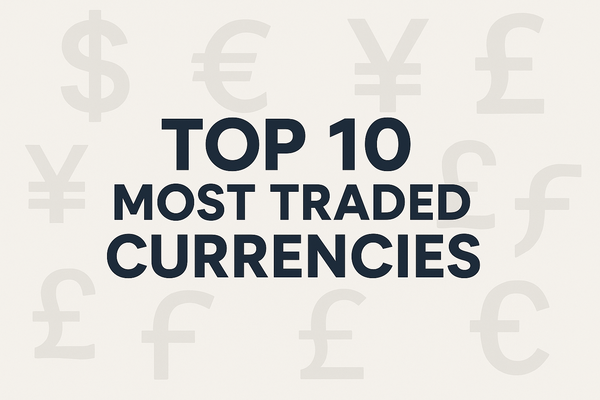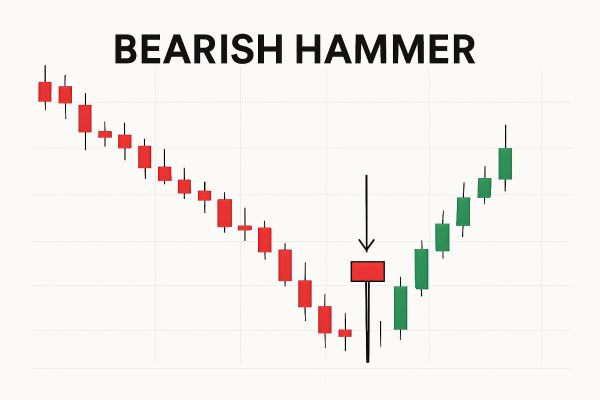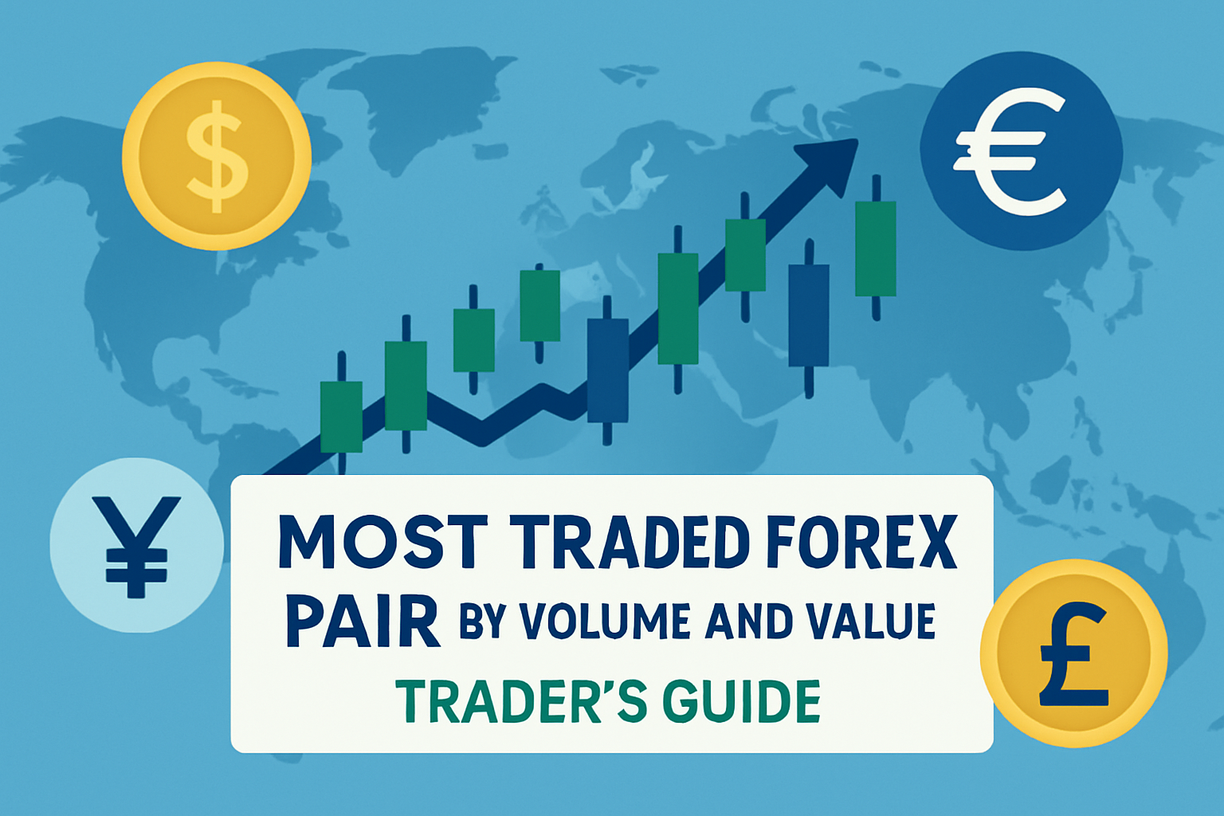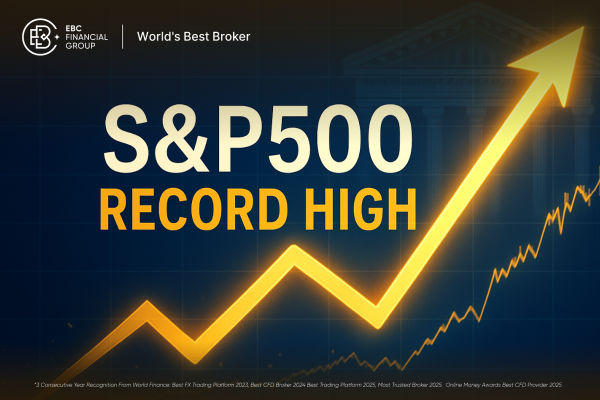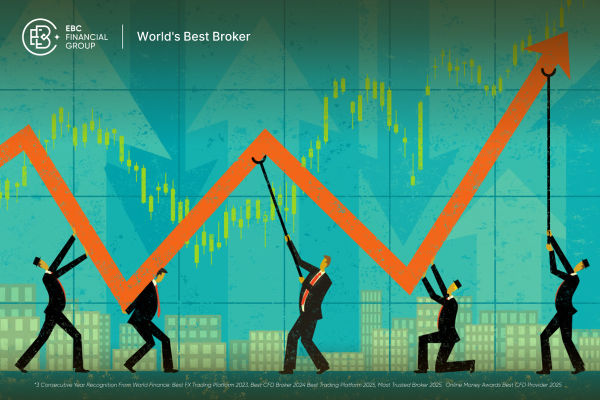The foreign exchange market is the largest and most liquid financial market in the world, where currencies are traded in huge volumes every day.
Understanding the most traded currencies is essential for traders aiming to capitalise on market movements and build effective strategies.
In this guide, we explore the top 10 most traded currencies, the forces that shape their value, and practical tips for trading them.
Top 10 Most Traded Currencies
As of October 2025, the global forex market remains the largest and most liquid financial market, with an average daily trading volume of approximately $9.6 trillion.
The U.S. dollar continues to dominate, participating in about 89.2% of all transactions, while FX swaps, spot trades, forwards, and options make up the bulk of activity.
Major trading centers like London, New York, Singapore, and Hong Kong together account for roughly 75% of turnover, highlighting the central role of these hubs in global currency flows.
| Rank |
Currency |
Approx. Daily Trading Volume (USD) |
Approx. Weekly Trading Volume (USD) |
Key Drivers Summary |
| 1 |
USD |
$6.6 trillion |
$33.0 trillion |
Global reserve currency, safe haven, oil & commodity pricing, Fed policy |
| 2 |
EUR |
$2.8 trillion |
$14.0 trillion |
Eurozone economy, ECB policy, political developments, trade flows |
| 3 |
JPY |
$1.6 trillion |
$8.0 trillion |
Safe haven, low interest rates, Japan economic data, risk sentiment |
| 4 |
GBP |
$0.9 trillion |
$4.5 trillion |
UK economic indicators, BoE policy, Brexit & inflation data |
| 5 |
AUD |
$0.6 trillion |
$3.0 trillion |
Commodity exports, Chinese demand, global raw material prices |
| 6 |
CAD |
$0.5 trillion |
$2.5 trillion |
Oil exports, US trade relations, BoC policy, commodity price shifts |
| 7 |
CHF |
$0.4 trillion |
$2.0 trillion |
Safe haven, political neutrality, banking system, SNB interventions |
| 8 |
CNY |
$0.3 trillion |
$1.5 trillion |
China’s policies, trade flows, capital controls, government regulations |
| 9 |
HKD |
$0.2 trillion |
$1.0 trillion |
Financial hub status, USD peg, trade flows |
| 10 |
NZD |
$0.1 trillion |
$0.5 trillion |
Agricultural exports, commodity markets, China & Australia trade links |
As of October 2025, the global forex market remains the largest and most liquid financial market, with an average daily trading volume of approximately $9.6 trillion.
The U.S. dollar continues to dominate, participating in about 89.2% of all transactions, while FX swaps, spot trades, forwards, and options make up the bulk of activity.
Major trading centers like London, New York, Singapore, and Hong Kong together account for roughly 75% of turnover, highlighting the central role of these hubs in global currency flows.
Major vs Minor Currencies: What's the Difference?
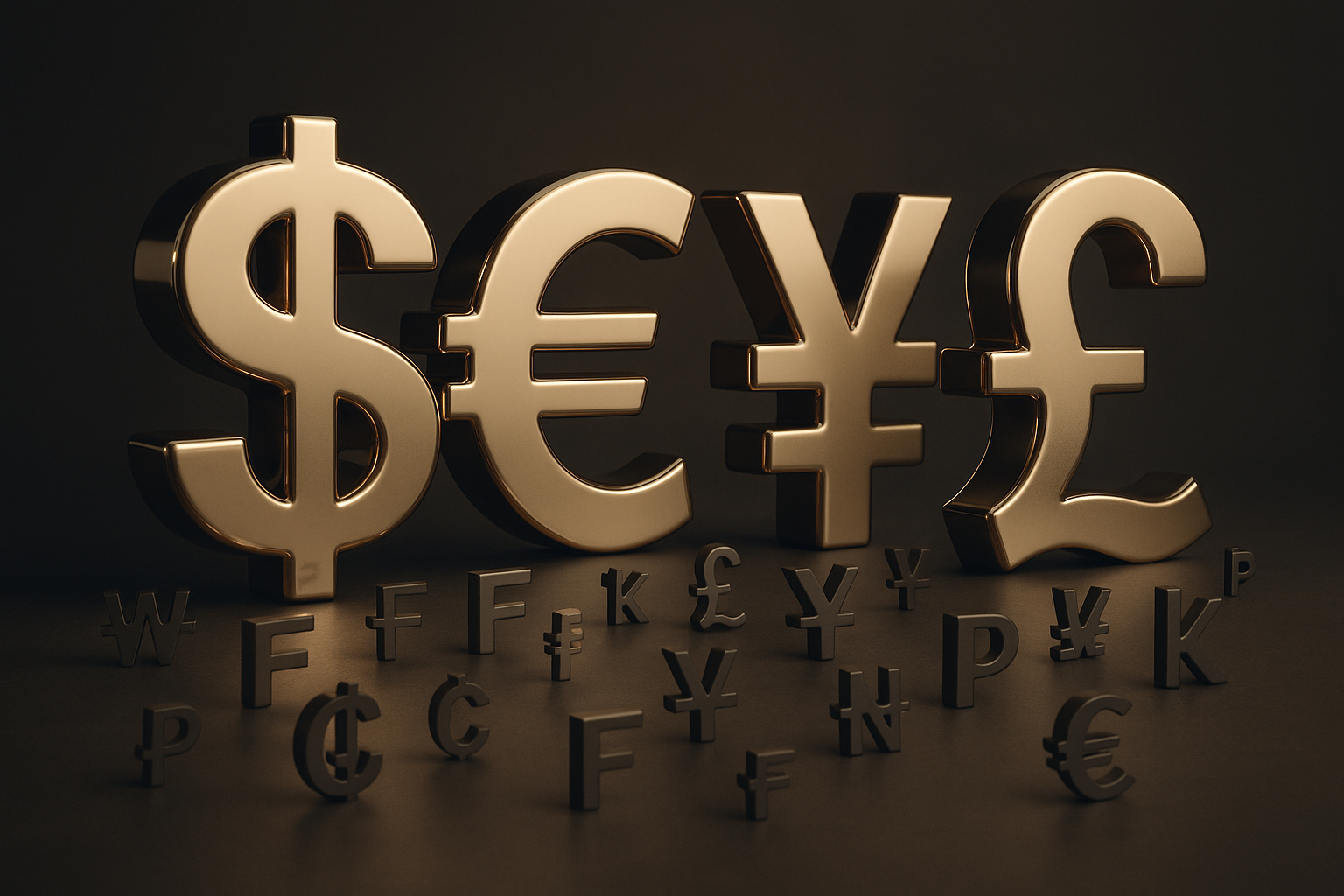
Before diving into the list, it's useful to understand how currencies are categorised.
-
Major currencies are the most traded in the world, have high liquidity, and are often paired with the US dollar (USD). Examples include EUR/USD, USD/JPY, GBP/USD, and USD/CHF. Majors tend to have tighter spreads, faster execution, and more predictable patterns for traders familiar with them.
Minor currencies (also called crosses) don't include the US dollar. Examples include EUR/GBP, EUR/JPY, and GBP/JPY. These pairs can offer unique opportunities but often come with higher spreads and more volatility.
For traders, knowing whether a currency is a major or minor is vital for setting risk levels, choosing strategies, and managing costs effectively. Many of the most traded currencies covered in this article fall into the major category.
Why Are These Currencies Most Traded In Forex Trading?
1. US Dollar (USD)
The US dollar is the most traded currency globally, featuring in around 88.5% of all forex transactions. It is the world's primary reserve currency and the benchmark for pricing key commodities such as oil and gold.
Its status as a safe haven means investors turn to the USD during times of geopolitical tension, global crises, or market instability, boosting its demand and often strengthening its value.
2. Euro (EUR)
The euro, used by 20 European countries, is the second most traded currency, with around 30.5% of daily forex turnover. The EUR/USD pair is among the most followed currency pairs worldwide.
The European Central Bank (ECB) plays a major role through interest rate decisions, inflation targeting, and asset purchase programmes. Traders closely follow ECB press conferences for clues on future euro valuation.
3. Japanese Yen (JPY)
As the most traded currency in Asia, the yen is renowned for its stability and is frequently used in carry trades, a strategy where traders borrow yen at Japan's low interest rates and invest in higher-yielding assets elsewhere.
The value of the yen can be significantly shaped by Japanese economic data, including GDP growth, inflation, and trade balance figures. The USD/JPY pair is often a good indicator of market risk sentiment, as the yen tends to strengthen during periods of uncertainty.
4. British Pound Sterling (GBP)
The British pound, one of the oldest still-circulating currencies, remains influential and highly liquid. It is best known for its volatility, with sharp moves often triggered by economic data releases and political developments.
Brexit continues to impact market sentiment, creating uncertainty around the UK's trade relationships and economic outlook. The Bank of England's interest rate decisions, as well as inflation and employment data, are key drivers for GBP/USD ('Cable') and other sterling pairs.
5. Australian Dollar (AUD)
The AUD is considered a commodity currency due to Australia's heavy reliance on exporting resources like iron ore and gold. Prices for these exports, as well as global demand for raw materials, often influence the AUD's strength.
Because China is a major trading partner, shifts in Chinese economic performance or demand can have a rapid effect on the currency. The AUD/USD pair's movements often reflect wider trends in commodity markets.
6. Canadian Dollar (CAD)
Like the AUD, the CAD responds strongly to changes in commodity prices, particularly crude oil, given Canada's role as a major oil exporter. Higher oil prices typically support the CAD, while price drops can weaken it.
Canada's economic ties to the US also make the USD/CAD pair an important watch for traders, with both trade data and Bank of Canada interest rate decisions influencing price moves.
7. Swiss Franc (CHF)
The CHF is widely regarded as a safe-haven currency sought in times of global instability. Switzerland's political neutrality, robust banking system, and consistent economic policies all contribute to this reputation.
The Swiss National Bank (SNB) sometimes intervenes in the market to manage the currency's strength, as an overly strong franc can hurt exports. This means traders in CHF pairs should remain alert to SNB statements.
8. Chinese Renminbi (CNY)
The Renminbi's importance is rising in line with China's global economic influence. Inclusion in the International Monetary Fund's Special Drawing Rights (SDR) basket has given it greater recognition as a reserve currency.
Still, China maintains tight controls on capital flows and exchange rates, meaning CNY trading is not as free-floating as the majors. Events in Chinese trade, manufacturing, and government policy have a strong impact on the currency.
9. New Zealand Dollar (NZD)
The NZD is also considered a commodity currency, with values often reacting to the price and demand for New Zealand's key agricultural exports, particularly dairy, meat, and wood products.
Economic links with China and Australia, and changes in global food commodity markets, can lead to notable swings in NZD pairs such as NZD/USD.
10. Swedish Krona (SEK)
While not as widely traded as the majors, the SEK remains important, backed by Sweden's export-driven economy and strong manufacturing and technology sectors.
Economic performance, interest rates set by the Riksbank, and global demand for Swedish products all influence the krona's value.
Why Knowing These Currencies Matters for Traders

The top-most traded currencies offer the highest liquidity, narrower spreads, and generally more predictable price action. This can lead to lower trading costs and a greater range of opportunities. Understanding what drives each currency helps traders:
Choose pairs that align with their preferred trading style.
Anticipate volatility spikes around key events.
Diversify exposure between safe havens, commodity currencies, and majors.
Tips for Trading the Most Traded Currencies
Start with major pairs like EUR/USD, USD/JPY, or GBP/USD for their liquidity and tight spreads.
Track economic calendars to prepare for announcements impacting key currencies.
Combine technical and fundamental analysis, for example, confirming a bullish chart pattern on AUD/USD after strong Australian export data.
Understand that correlations between currencies, such as AUD, NZD, and CAD, often move in tandem due to commodity price shifts.
Manage risk with appropriate position sizing, stop-loss levels, and overall exposure limits.
Frequently Asked Questions (FAQ)
1.What is the most traded currency in the world?
The U.S. dollar (USD) is the most traded currency, involved in about 89.2% of all forex transactions as of October 2025, due to its role as the global reserve currency and pricing benchmark for commodities.
2. Why do traders focus on major currencies?
Major currencies like USD, EUR, JPY, and GBP offer high liquidity, tighter spreads, and generally more predictable price action, making them ideal for both short-term and long-term trading strategies.
3. How do commodity currencies differ from majors?
Commodity currencies (AUD, CAD, NZD) are heavily influenced by global commodity prices and trade relationships with major partners like China and the U.S., making them more sensitive to economic cycles and commodity market trends.
4. What factors drive currency value in forex?
Key drivers include central bank policies, interest rates, economic indicators (GDP, inflation, employment), geopolitical developments, commodity prices, and market risk sentiment.
Final Thoughts
Mastering the top traded currencies requires understanding both macro-level drivers (central bank policies, commodity trends, and geopolitical risks) and market microstructure (liquidity, spreads, and volatility).
The USD remains the anchor of global forex, while major and commodity currencies offer strategic trading opportunities.
For traders, staying informed about economic calendars, combining technical and fundamental analysis, and managing risk appropriately are critical for consistent success.
Ultimately, knowledge of these currencies and their drivers allows for smarter, data-driven trading in the world’s largest financial market.
Disclaimer: This material is for general information purposes only and is not intended as (and should not be considered to be) financial, investment, or other advice on which reliance should be placed. No opinion given in the material constitutes a recommendation by EBC or the author that any particular investment, security, transaction, or investment strategy is suitable for any specific person.
